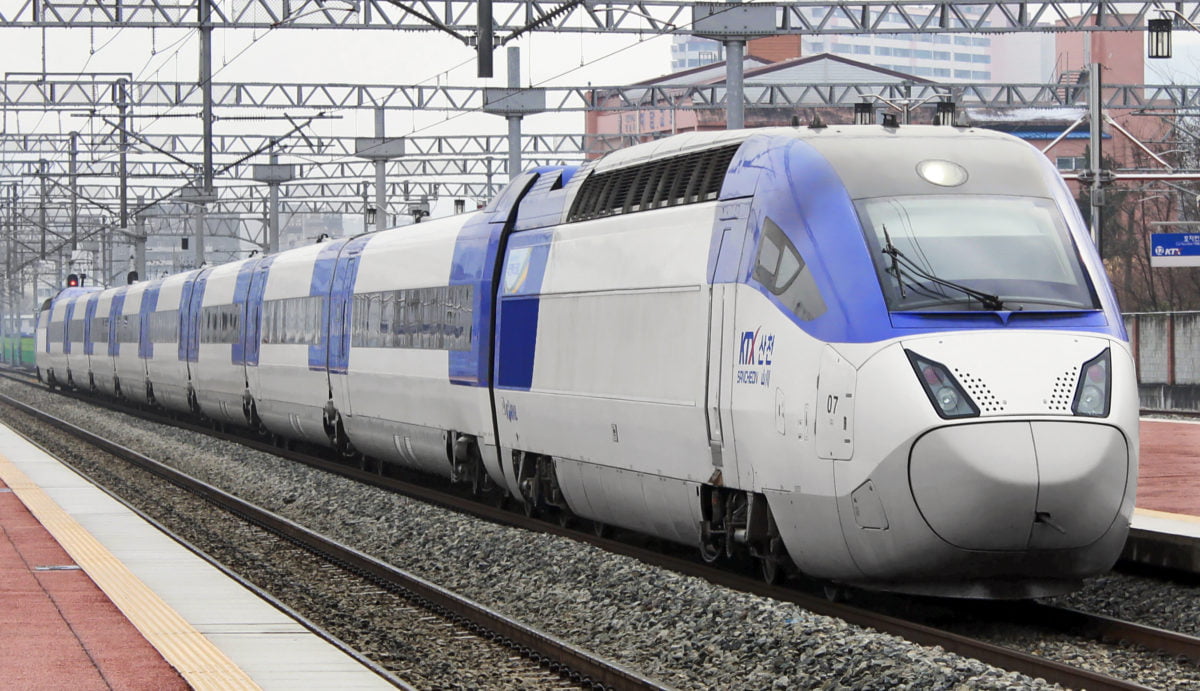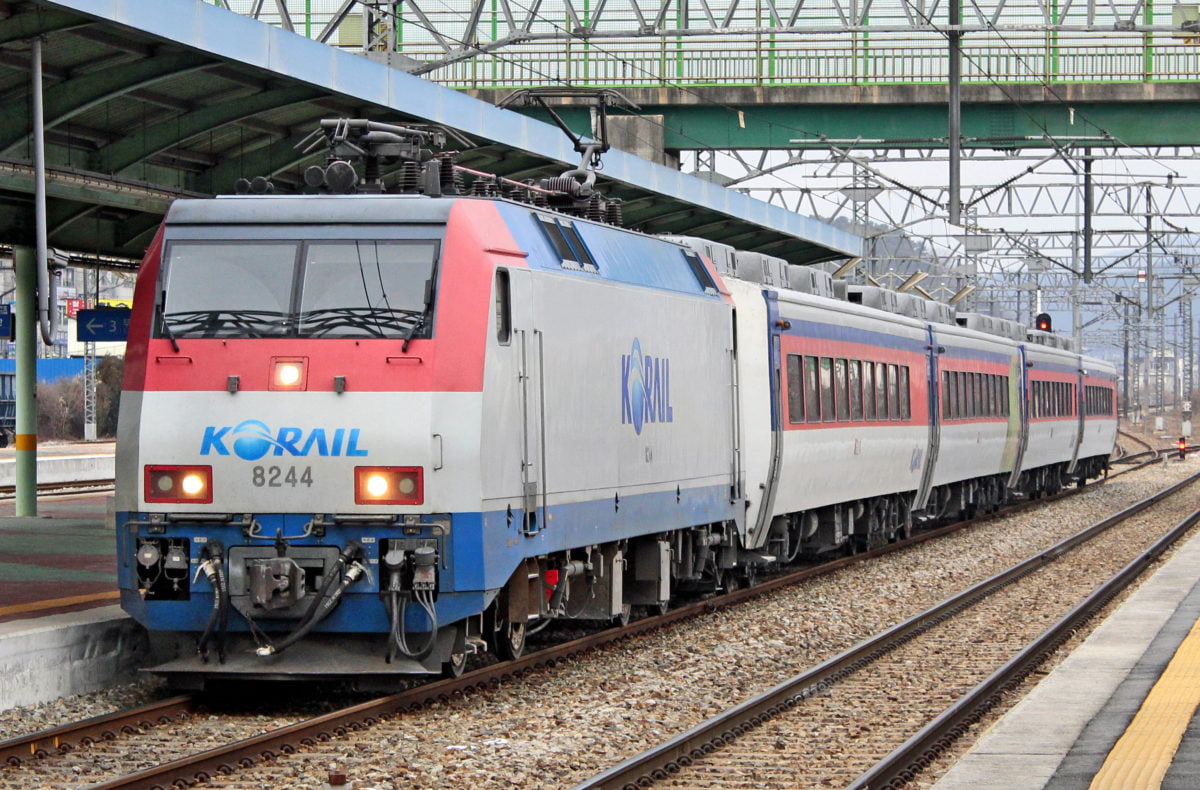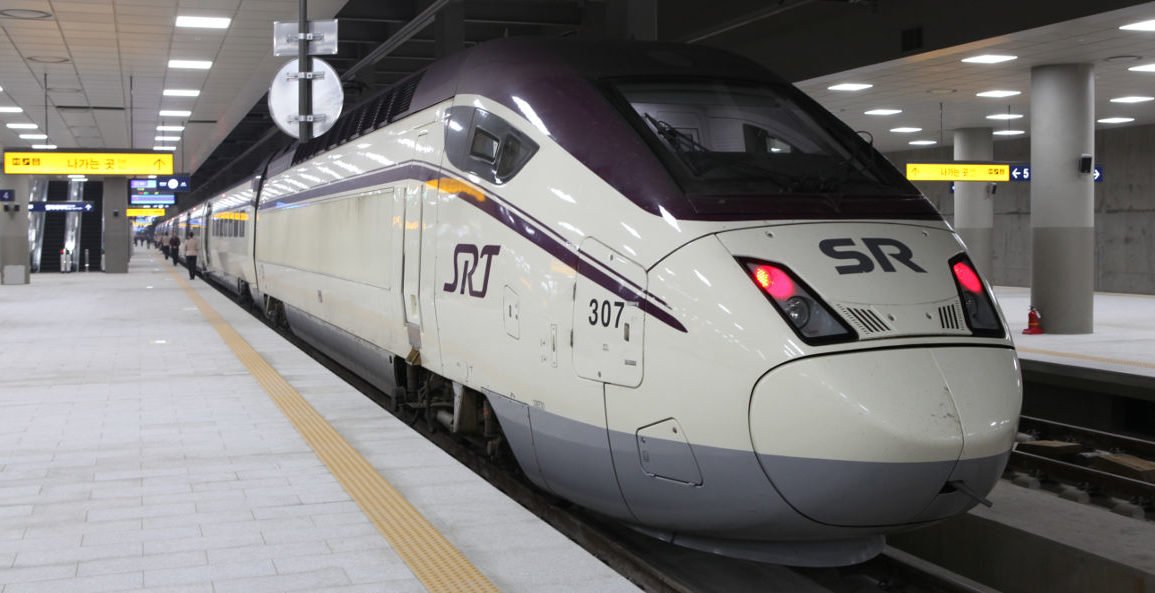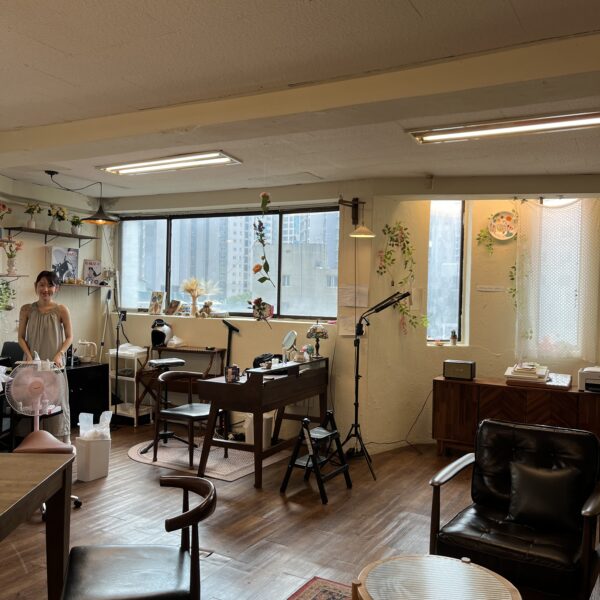If you are planning a trip to South Korea and want to travel outside of Seoul, you will likely be hopping aboard Korea’s national railway. Like almost everything in Korea, the trains are unbelievably convenient, reliable, and efficient. Here is a concise guide to the main types of Korean trains, how to book tickets, and what to expect when you travel by train in Korea. It’s not nearly as scary as you might think after watching Train to Busan — I promise!
Main Types of Trains in Korea
The national railway in Korea is operated by Korail. This includes several types of train: KTX, ITX-Saemaeul, Mugunghwa, Nuriro, Airport Express trains, and the ITX Cheong-Chun. Korail also operates several sightseeing trains and metropolitan subway services in Seoul and Busan. There is also the SRT (Super Rapid Train) which is not operated by Korail, but is still very easy for tourists to access. The four main types of train you are likely to travel on as a tourist are the KTX, SRT, ITX-Saemaeul, or Mugunghwa.
KTX

KTX (Korea Train eXpress) is the most well-known of these trains and a good option for tourists. This is a high speed service which takes passengers to most major cities in the country. The KTX can take passengers from Seoul to Busan in roughly 2 hours 45 minutes, Seoul to Daejeon in 1 hour, and Seoul to Suwon in 30 minutes.
This is the most expensive option, with the journey from Seoul to Busan costing 56,800 KRW. Due to its high speed, regular departures, and good-connectivity, the KTX is great for travelers who want to move quickly and efficiently, and don’t mind spending a little more money for these benefits.
At the beginning of 2021, Korail launched a new generation of KTX called KTX-Eum (KTX-이음). Completely developed with Korean technologies, this eco-friendly electric multiple unit (EMU) trains should help shorten travel time around South Korea.
SRT

The SRT offers a cheaper and slightly faster service than the KTX. However, as they depart from Suseo, in the southeast of Seoul, they are less well-known. These trains are well-connected and can take passengers across the country as far as Mokpo and Busan.
The journey from Seoul (Suseo) to Busan costs 51,800 KRW for a standard adult ticket and takes around 2 hours 30 minutes. The trains are as – if not more – comfortable than the KTX and are usually less busy. Although the SRT is not operated by Korail, tickets can still be purchased easily and the trains are very accessible for foreign travelers.
ITX-Saemaeul (ITX-새마을호)

Next up is the ITX-Saemaeul, or Intercity Train eXpress. The ITX is the second highest class of train after the KTX. These trains operate slower than the KTX because it stops at more stations. This can be more convenient for travelers who want to visit smaller, more specific locations. The ITX is still a very comfortable option — I would say it’s more comfortable than the KTX, as there is more leg room, and if you are travelling with others you can turn your seats around to make groups of four.
Compared to the KTX, the journey from Seoul to Busan takes around 3.5 hours and costs 42,600 KRW. Although the travel time is longer than KTX, it is an appropriate option for travelers who want a more economical option and don’t mind a longer journey.
In 2012, the ITX-Cheongchun was built to connect Seoul and Chuncheon. This train line allows passengers easy access to tourist destinations such as Nami Island, Petite France, and several drama filming locations which are popular with its visitors.
Mugunghwa (무궁화호)


The third and oldest type of train is the Mugunghwa. These trains are much cheaper than the KTX and ITX, and they stop at far more stations. Mugunghwa trains are ideal for shorter journeys and for people visiting niche destinations. You can take cross-country journeys on this train, but it is not as comfortable as the other classes of train, and can be extremely bumpy.
The journey from Seoul to Busan takes approximately 4.5 hours and only costs 28,600 KRW – almost half the price of the same journey on the KTX! If you have a lot of time to spare for travelling and really want to save money, this would be a good option.
Mugunghwa trains have reserved seats, unreserved seats, and standing areas. I would recommend using this train for journeys under 2 hours as it can get uncomfortable, but if you are the type of traveler who can sleep anywhere, why not take advantage of this cheaper train!
Korean Trains Schedule
Four options for ‘Seoul to Busan’: how long, how much, how comfortable?
KTX
Travel time: ~ 2 hours 45 minutes
Price: ~ 60,000 KRW
Comfort: Very comfortable!
SRT
Travel time: ~ 2 hours 24 minutes
Price: ~ 52,000 KRW
Comfort: Very comfortable (and even more peaceful than KTX!)
ITX
Travel time: ~ 3.5 hours
Price: ~ 43,000 KRW
Comfort: Very comfortable!
Mugunghwa
Travel time: ~ 4.5 hours
Price: 27,000 KRW
Comfort: Less comfortable
How to Purchase Korean Train Tickets
You can purchase train tickets online or at any station up to a month before the departure date. Purchasing tickets online or offline is incredibly simple and both have English services available, if required.
Korail Tickets Booking Online
To book tickets online, you can visit Korail’s website. The SRT has its own booking website, here. Simply select the desired route, departure date, and number of passengers. If you want to find a cheaper route, check out the transfer routes. Transferring in Korean train stations is incredibly easy as trains almost always arrive and depart on schedule. Trains will usually depart at the exact minute stated on your ticket, so don’t be late!
You need to input some basic personal information, bank details, and then after confirmation of your booking you will receive seat reservation by email. I would recommend taking this to the ticket office (along with your bank card) and getting it issued just as a precaution. I have never had a train ticket checked in Korea, but this can come in handy in case someone else is sitting in your seat, or you can’t rely on technology to guide you to your seat.
You can also purchase your ticket through the application Korail Talk (코레일톡) for the KTX, ITX, and Mugunghwa trains (Android | iOS). Easy to use you just have to search trains by dates, hours and choose the one that you want. After that, you just have to enter the information about yourself (Name, Gender, Password, Nationality, and Email address). Now you just have to pay with your credit card and enter your Alien Register Card number. Don’t forget about the information that you entered (such as your password) because you will need them in order to look at your ticket online.
Booking at the Station

Train tickets can just as easily be purchased at any national train station, too. Stop by the train station a few days prior to your departure date, if possible, to purchase a ticket. Some routes sell out around a week or so before departure, so if you have the time to spare I would advise buying in advance.
To purchase tickets in the station, there are Korean and English signs which guide customers to the ticket office. You can also purchase tickets from self service machines which are usually located nearby the ticket office.
Korail Pass
Foreign visitors who will be riding the train frequently in Korea should consider the Korail Pass. This is a great option for tourists who want to travel a lot around Korea in a short period of time. You can find more information about this and purchase the pass on Korail’s website here.
National Holidays
Like any country, it can be difficult to book tickets to travel during national holidays in Korea. This includes Seollal (Lunar New Year, usually around the end of January), Chuseok (late September-early October), Christmas Day, and New Year’s Day. Especially during Seollal and Chuseok, many Korean people will travel to visit their families. This means tickets will be booked up very quickly, so I would recommend visiting the train station directly or calling the customer service to clarify the date from which you can purchase tickets.
Refunds
If you need to get train tickets refunded, this can be done easily at the ticket office or online through the website or the application. From Monday to Thursday, cancellations until 3 hours before the journey are free but under 3 hours, you will have to pay 10%. However, if you want to refund your ticket from Friday to Sunday and during Holidays, 24 hours before your trip, there will be a small charge of 400 KRW, and from 24 hours to 3 hours before the charge will be a 5% charge of the original train ticket price.
If you missed your train, you can also be refunded only at the Ticket Offices of Korail Stations. Under 20 minutes since your train departed, you will pay a 15% fee, between 20 and 60 minutes it will be a 40% fee and over an hour it will be a 70% fee.
Corona Safety Policies
Due to the Covid19, half of the seats should be empty on the train, so the tickets should be sold out more quickly especially during holidays, so be careful to book your ticket in advance. Just like in the subway and buses, wearing a mask is mandatory when taking the train and the staff will be expecting you to avoid eating or drinking during your trip since it requires you to remove it. Outside of those policies, you can find in each station different policies, such as not being able to enter 10 minutes before the platform before your train arrives or staff will ask you to enter slowly and check your temperatures and tickets.
What to Expect on a Train in Korea
So you have your train ticket and you are ready to travel! Here are some final tips and bits of advice to have a great train journey in Korea.
As I said previously, if you booked tickets online, I would still recommend visiting the ticket office before your journey to issue a physical copy. The train crew will usually pass through each car regularly, but don’t check tickets. However, passengers are required to have a copy of their ticket just in case.
Korean train stations are very well sign-posted and easy to navigate around. I would advise getting there early, especially if you are a tourist and aren’t familiar with Korea. Trains in Korea don’t have a great selection of onboard amenities. Most trains have a simple vending machine with water, coffee, and some snacks. If you are taking a long journey, stop by a convenience store before you board. There will most likely be at least one convenience store at the station, or even on the platform, so make sure to stock up.

Don’t forget, when you are waiting to board, try to stand at the right car for the specific type of train you are taking. I once made the mistake of standing at the area for the KTX — not realizing that different trains obviously have different lengths — when I was actually boarding an ITX train. When the train arrived, it went straight past me and stopped at the other end of the platform. I had to run half way down the platform with an extremely heavy suitcase just to get ON the train — don’t make the same mistake as me!
Follow and respect Korean etiquette as much as you can on the train. Although there is no designated quiet car on the trains, it is generally expected that you keep your voices down. Try not to be too loud, or you risk the chance of being shushed by another passenger.
Finally, keep an eye on your watch and have your ticket to hand. Especially on the ITX and Mugunghwa, the trains stop very frequently and you don’t want to accidentally miss your station. Sometimes announcements are not made in English on Mugunghwa trains, but if you know your expected arrival time, then the train will almost always arrive without delay.
Staying inside Seoul? Check out our full guide on Seoul’s climate card!





